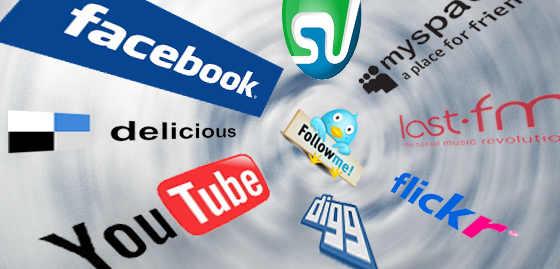In this edition of Massive Links, we invite you to open your mind and close a few tabs. Not for any meaningful social purpose — just because you’ll need to open a lot of new ones when you read this post.
—
Do you ever feel like you’re effecting real change from the comfort of your own home office, mouse in hand, fair trade, organic coffee at your side? Well, you can give that dream a rest. In his recent New Yorker article, Small Change, Malcolm Gladwell uses the civil rights movement to illustrate his point that successful, high-risk activism requires strong ties and hierarchy, something social media networks lack. He argues that real social change not only doesn’t need email, facebook, or twitter, it cannot be accomplished by using social media as its main organizing principle.
I agree that social media is only a tool, not unlike the telephone — it is difficult to imagine the logistics behind many campaigns without it, but it doesn’t make things happen on its own. It can, however, be a compelling way to rally support in real high-risk situations, like in the case of James Powderly (of Graffiti Research Lab) and his fellow protestors’ detention in China during the 2008 Olympics. And this MetaFilter thread that allowed for the kind of real-time information sharing necessary to stop two Russian girls from being caught up in a sex trafficking scam. These small scale events didn't involve a lot of people, but I'm sure that didn't matter to the people involved.
Gladwell casts online activists as minimally motivated and loosely connected, without the incentive necessary to take on organized establishments. And it’s true, for all the money I’ve donated to MoveOn.org, I haven’t moved much. Still, he recognizes social networks’ capacity for certain kinds of action. “The Internet lets us exploit the power of these kinds of distant connections with marvelous efficiency … The drawbacks of networks scarcely matter if the network isn't interested in systemic change…”
Blogs like this one and other online ventures use social networking as a tool to build community and disseminate information. It’s a productive way to make connections, as well as being a fertile ground for new ideas. Social networks are powerful entities, allowing us to become our own advocates. It may not be high-risk activism, but I wonder if it has been around long enough for us to appreciate its potential.
—
Over at Jerry Saltz’ new column on nymag.com, he recently got into a bit of a tiff with Frieze magazine. In response to a question about whether critics should post disclaimers when they write about artists whose work they own, Jerry raised a possible case of cronyism in Robert Storr’s column at Frieze. The response from Jennifer Higgie, co-editor at Frieze, describes the conflict of interest as simply a long-standing professional relationship. While she has a point that Storr’s positive critique of Sarah Lewis' “Site Santa Fe” show was not meant to be a review, it still seems like a stretch to deny its “self-serving” nature entirely. You decide.
—
Tyler Green, who has led many a conflict of interest crusade, spoofs himself in response to the whole Jerry Saltz/Frieze incident. After he and Jerry’s public feud over ethics and morality in the art world, it is strangely amusing to read Tyler’s parody.
—
Among the ranks of the newly announced MacArthur fellows is Jorge Pardo. Pardo’s spring exhibition at Friedrich Petzel was negatively reviewed here by Tom Moody and sparked an extensive debate in the comment thread. The MacArthur Foundation also awarded a fellowship to Elizabeth Turk. Both artists will receive the $500,000 no-strings-attached “Genius” grant in a series of installments over the next five years.
—
ArtsTech meetup, a group dedicated to integrating the worlds of art and technology, needs your help! They are launching a new initiative aimed at matching up art organizations with tech volunteers. It sounds like a win-win, a great opportunity both for techies and for arts organizations with tight budgets. Participating organizations include The Whitney Museum, The Liberty Science Center, New York Foundation for the Arts, New York Academy of Art, The Museum of American Finance, Rhizome, and RxArt. If you can spread the word or help find sponsors, please share this link!
—
Check out the New York Observer’s culture page for Paul Laster’s column and interview with London-based artist Ryan Gander. Mr. Gander’s exhibit opens Friday at the Guggenhem while his public sculpture, The Happy Prince, is on view in Central Park.



Comments on this entry are closed.
{ 1 trackback }